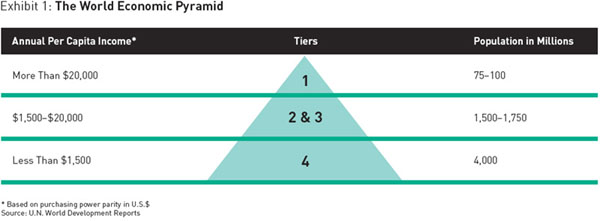Though we promote the idea of fighting poverty with business--we do not acknowledge that oftentimes
"the poor lack the education, information, and other economic, cultural, and social capital that would allow them to take advantage of--and shield themselves against--the vagaries of the free market"Though many would consider Karnani pessimistic and only dwelling on the negative possibilities of economic solutions to helping the world's poor, we must take heed to the information given. With the data overwhelmingly emphasizing the possibilities of profiting off the BOP, we must use our knowledge of the beast which is the free market and assure that systems are put in place to protect those who are most vulnerable--our poorest people. As Michele Jolin articulated in, On the Frontlines: Innovating the White House, much of the responsibility to promote social entrepreneurship should fall on our President and his or her White House. Jolin has been successful in her attempts as we now have a White House Office of Social Innovation and Civic Participation.
So we have seen widespread support for social innovation--particularly serving the BOP--but not enough has been done to prevent what Jolin explains to be a very real possibility--The widespread exploitation of an entirely new population, the BOP. So is Jolin being a pessimist, or is she completely rationale in her concerns? I ask, are we doing enough to protect the BOP? Is this a real issue? Should the new White House Office of Social Innovation make this one of its responsibilities? Or should we make the late Adam Smith happy by giving the free market a try at the BOP?

No comments:
Post a Comment
Note: Only a member of this blog may post a comment.